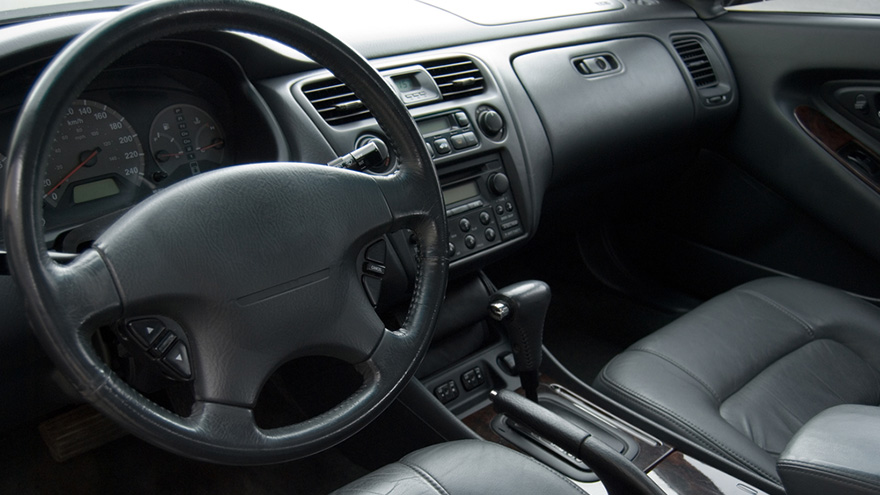Used-vehicle prices high for market returnees

Consumers drive the auto market. And the F&I office seals the deals. But if consumers can’t get the price they want, especially in the used market, there’s cause for concern. On the other hand, a race to the bottom — although low prices might be more attractive to your next shopper — can hurt business, and is ultimately unhealthy for all involved.
That’s why Auto Remarketing Canada sought out experts from the Canadian auto retail market to get the pulse on vehicle affordability for 2020, and what consumers and dealers can expect to see on lot-price stickers.
Shannon Friesen, vice president of dealer services at Canada Drives, said buyers can expect to pay slightly higher prices for their pre-owned car.
And the Canadian Black Book Used Vehicle Value Retention Index broke records throughout 2019: “Therefore, on the whole, used-vehicles prices have increased,” said Brian Murphy, who is VP of research and analytics at Canadian Black Book.
To further illustrate price increases in the used-vehicle market, the autoTRADER.ca Price Index remained steady throughout last year, but indicated the median price in November for used vehicles was $18,888, signifying a year-over-year increase of 7.4%.
TRADER analysts offered this example as a contrast: Median used-vehicle prices were around $17,000 in October of 2018. But TRADER leaders say this isn’t cause for alarm.
“Rather than marking a sharp increase in used-vehicle prices, this data identifies a steady adjustment in the market following unusually low prices in 2018. Used-car pricing could be going up because of the availability of more sought-after features in used vehicles,” said Nuno Loureiro, director of business intelligence at TRADER.
Higher used-car prices also indicate that the new-car market has softened, Friesen said.
She pointed to results from the DesRosiers Automotive Consultants AutoWatch report for November, which estimated that overall, the new-car market declined 3.8% that month from sales figures during the same period of 2018.
The economy remained fairly stable in Canada over 2019 despite a Federal election and “polarizing topics like the TransCanada Pipeline that can keep wary consumers from spending their money,” Friesen said.
And The Bank of Canada overnight rates have remained stable at 1.75%.
“Essentially, consumer confidence hasn’t changed since the tail end of 2018, maintaining used-car prices,” Friesen added.
Taking a look at the new-car side of the market, the median price for new vehicles in November was 2.3% higher than the previous year, and 1.5% higher than the month prior. According to the autoTRADER.ca Price Index, this was the largest month-over-month increase in 2019 as of early December, as the median price of a new vehicles reached $40,490.
New-vehicle prices continue to trend upward, driven by new 2020 models hitting showroom floors, TRADER shared.
And, “as new-car pricing continues to go up, used pricing increases, as well,” Loureiro said.
Although consumers might have a bit of sticker shock on the used lot, especially those who haven’t been in the market for a used car in quite some time, it seems recent spikes in new-car prices and market softening are boding well for dealers’ used departments.
And even if Canadian consumers entering the vehicle market for the first time in five or so years might be seeing higher prices than they anticipated, many of these vehicles, CarGurus director of auto industry analytics George Augustaitis pointed out, are “high quality, really good vehicles” that are in high demand. For example, SUVs, crossovers and trucks. Not to mention, more technology, longer-lasting engines and similar perks.
Prices following demand for larger vehicles
As for whether any particular vehicle type or sector are seeing significant shifts in pricing, Friesen pointed out Canada Drives has seen a big shift in what the Canadian car buyer wants from even a few years ago, which plays a role in demand and pricing.
As for which vehicle types are growing in popularity, she says “there’s no question”: trucks and SUVs.
Truck prices have grown relatively stable over 2019 and set a new high watermark in October, according to the autoTRADER index.
“For the first time over the last two years, the median price of a new truck has exceeded $54,000 (as of October 2019). This is likely due to increasing demand,” TRADER’s Loureiro says.
Body styles that aren’t as popular such as sedans and subcompact cars will likely be more affordable than larger and more sought-after SUVs and trucks, says TRADER analysts.
For comparison: Sedans sat at an average price of $27,363 (an increase of 1.2% month-over-month), while SUVs were being listed at an average of $37,093 (an increase of 1.5% month-over-month), according to the November autoTRADER index.
Murphy at Black Book said data from CBB showed the crossover/SUV segment was up 6% year-over-year in late December, and compact/crossover SUVs were up by 4.9%.
Murphy says, these vehicles are “very much in demand, and we have seen prices of those remain strong.”
Leanne Kripp, head of autos at Kijiji, also pointed out that on the Kijiji site over the past five years, they have seen a trend where CUVs have overtaken the “wagon” in terms of popularity in the new market.
And the day of the sedan may be over, as well: “Gone are the days when every driveway had a sedan to haul the family. Practically, the industry’s largest carmakers like Ford and FCA have all but eliminated passenger cars from their lineup,” Friesen said.
Where your budget-conscious customers are headed
So, shoppers aren’t getting into a crossover or SUV for a deal these days. So, which vehicle sectors should dealers be promoting to their customers looking for the best deals on pre-owned lots?
To answer this question, take a look at vehicle categories dropping in popularity in Canada these days.
For example, new passenger car types of all types declined by double-digit percentages in October, according to the DesRosiers group, except for high luxury cars (down 3.6%) and luxury sports cars (up 41.8%).
“Incentives for new passenger cars drive their purchase price down as manufacturers try to move their metal, and we see dealers forced to sell pre-owned cars at lower prices as a result,” said Friesen. “Someone looking for a great deal on a vehicle would do well to shop for a compact or subcompact car or a midsize sedan.”
As for what might be one of the most affordable types of vehicles for consumers looking for their next ride on the Kijiji marketplace, shoppers may gravitate toward the hatchback vehicle category. Kripp said this trend is predictable, due to the lower cost of manufacturing the vehicle.
Analysts at CBB said that based on the company’s annual (2019) Canadian Black Book Best Retained Value Awards, the non-luxury segment that held the least amount of its original MSRP over four years was the full-size cars.
“This speaks to the decrease in demand for these vehicles used. That said, there are plenty of popular cars that consumers might find at an excellent price,” Murphy said.
Vehicle affordability outlook for 2020
Again, used-vehicle affordability is largely tied to what occurs in the new-car market.
Breaking predictions down for the new year, Friesen said, “We know that 2019 will see a decrease in sales from record-setting sales of over 2 million new units in each of the past two years, and it looks like new-car sales in 2020 will dip slightly lower yet.”
This dip in new-car sales after record sales years could spark growth in used cars retailed along with a similar modest rise in pre-owned prices.
Augustaitis says trends are pushing consumers more toward used vehicles. And even though gross domestic profit in Canada beat expectations in the second and third quarters, he pointed out as 2019 was wrapping up, it was starting to trend down.
“Whenever you see consumer confidence trending down as we had in Q4 and to start 2020, consumers start getting a little shaky about buying big ticket items. They start wondering if they are comfortable enough to buy a vehicle, especially on the new side of things,” Augustaitis said. “So, I think that’s also going to support a push towards used.”
At an aggregate level, there’s really no sign that prices for used cars will be trending down anytime soon, in the lanes or on the lots.
“When I look at the mix of vehicles that are coming back off-lease, there’s really no reason for prices to come down at the aggregate level,” Augustaitis said.
As for whether affordability trends and high vehicle prices are pushing consumers toward alternative auto retail options, TRADER analysts don’t think so.
“If the inference is that ride-sharing will compromise vehicle sales, outside of major metro markets vehicles are still a life necessity in most cases and with the continued growth in the real estate market in Canada — less and less of the mainstream are opting to live in the core city centres of Toronto, Vancouver and Montreal which supports vehicle demand,” Loureiro said.
Loureiro thinks ride-sharing programs are a “credible and convenient” option, “but overall vehicle transportation dependencies in general are still in play.”
“Having said that, when you consider the younger generations are waiting longer to get behind the wheel – that could create some lifestyle changes over the longer term,” Loureiro said.


